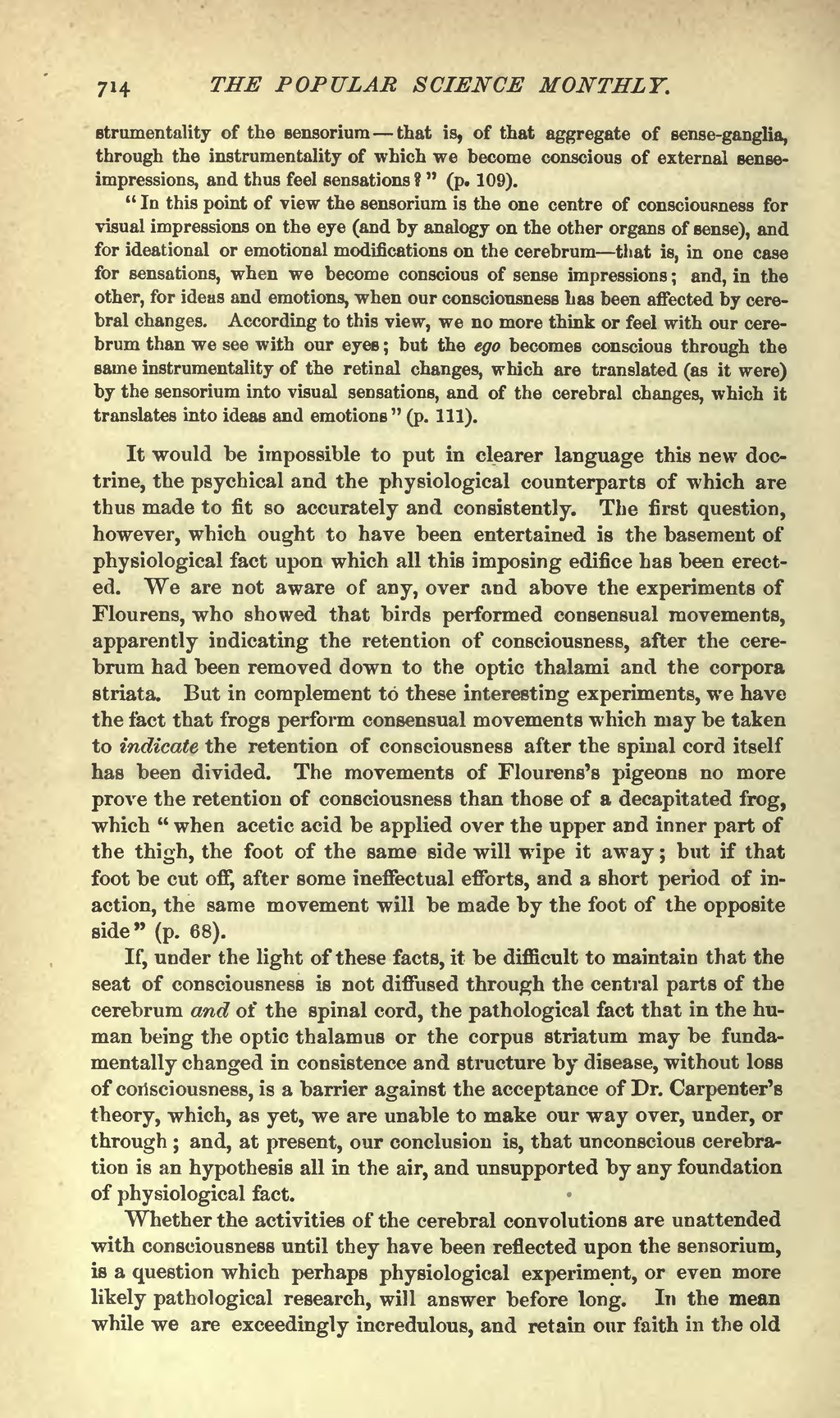strumentality of the sensorium—that is, of that aggregate of sense-ganglia, through the instrumentality of which we become conscious of external sense-impressions, and thus feel sensations?" (p. 109).
"In this point of view the sensorium is the one centre of consciousness for visual impressions on the eye (and by analogy on the other organs of sense), and for ideational or emotional modifications on the cerebrum—that is, in one case for sensations, when we become conscious of sense impressions; and, in the other, for ideas and emotions, when our consciousness has been affected by cerebral changes. According to this view, we no more think or feel with our cerebrum than we see with our eyes; but the ego becomes conscious through the same instrumentality of the retinal changes, which are translated (as it were) by the sensorium into visual sensations, and of the cerebral changes, which it translates into ideas and emotions" (p. 111).
It would be impossible to put in clearer language this new doctrine, the psychical and the physiological counterparts of which are thus made to fit so accurately and consistently. The first question, however, which ought to have been entertained is the basement of physiological fact upon which all this imposing edifice has been erected. We are not aware of any, over and above the experiments of Flourens, who showed that birds performed consensual movements, apparently indicating the retention of consciousness, after the cerebrum had been removed down to the optic thalami and the corpora striata. But in complement to these interesting experiments, we have the fact that frogs perform consensual movements which may be taken to indicate the retention of consciousness after the spinal cord itself has been divided. The movements of Flourens's pigeons no more prove the retention of consciousness than those of a decapitated frog, which "when acetic acid be applied over the upper and inner part of the thigh, the foot of the same side will wipe it away; but if that foot be cut off after some ineffectual efforts, and a short period of inaction, the same movement will be made by the foot of the opposite side" (p. 68).
If, under the light of these facts, it be difficult to maintain that the seat of consciousness is not diffused through the central parts of the cerebrum and of the spinal cord, the pathological fact that in the human being the optic thalamus or the corpus striatum may be fundamentally changed in consistence and structure by disease, without loss of consciousness, is a barrier against the acceptance of Dr. Carpenter's theory, which, as yet, we are unable to make our way over, under, or through; and, at present, our conclusion is, that unconscious cerebration is an hypothesis all in the air, and unsupported by any foundation of physiological fact.
Whether the activities of the cerebral convolutions are unattended with consciousness until they have been reflected upon the sensorium, is a question which perhaps physiological experiment, or even more likely pathological research, will answer before long. In the mean while we are exceedingly incredulous, and retain our faith in the old
